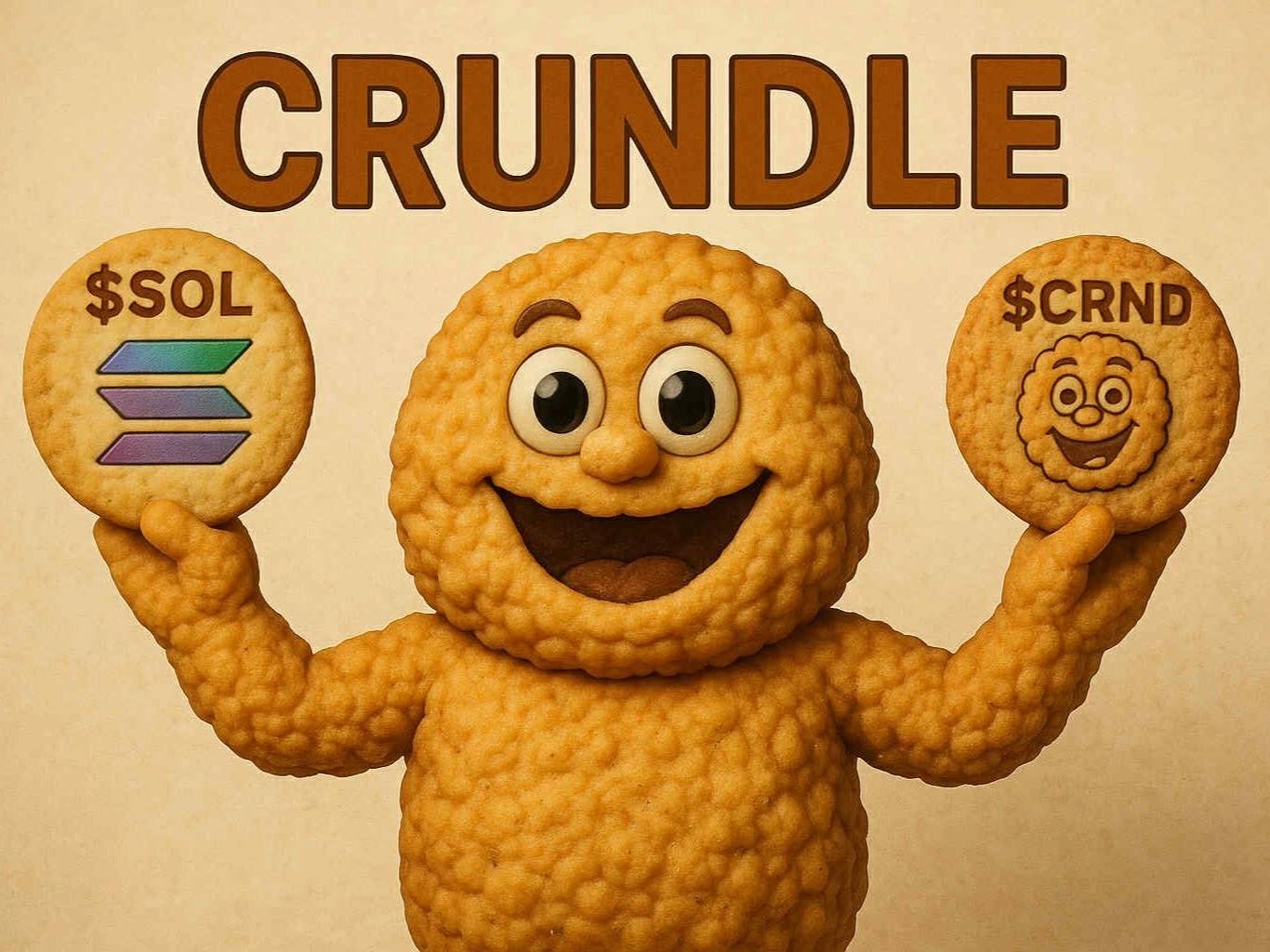Subscribe to wiki
Share wiki
Bookmark
Crundle
Crundle
Crundle (CRND) is a memecoin that operates on the Solana blockchain. The project's central theme is based on the narrative that its existence was predicted by the animated television series, The Simpsons, combining imagery of the character Homer Simpson with a figure referred to as "Crumble Man." [1] [2]
Overview
Crundle was launched in September 2025 as a speculative digital asset with no stated utility beyond its cultural theme. Like many meme coins, its development and promotion are driven by a community of supporters, which the project refers to as the "Crundle Army." The core narrative leverages the long-running internet meme that The Simpsons has a history of predicting major world events, positioning Crundle as a "prophecy" fulfilled on the blockchain. The project's official description states, "A meme born from prediction itself, blending cult humor with unstoppable community energy. Not just another coin — the one foretold by Springfield's finest." [1] [2]
The project was initiated by an anonymous founder or group of founders, and no team members have been publicly identified. This anonymity is a common characteristic in the meme coin sector. The token's value is primarily influenced by community engagement, social media trends, and speculative trading activity on decentralized exchanges. The project maintains an official website and social media channels on X (formerly Twitter) and Telegram to engage with its community. [1] [3]
History
The Crundle SPL token was created on the Solana blockchain on September 15, 2025. The initial liquidity pool for the token was established later the same day, pairing CRND with Solana's native token (SOL) on the Meteora decentralized exchange. The token was launched using Moonit, a platform designed for deploying new tokens on the Solana network. The project's official X account, @CrundleonSOL, was also created in September 2025 to coincide with the launch. [4] [2] [3]
Technology
Crundle is an SPL token, the standard for fungible tokens on the Solana blockchain. It is primarily traded on Solana-based decentralized exchanges (DEXs), with its main liquidity pool hosted on Meteora. [2]
Contract Details
The project's on-chain assets are managed by several key smart contract addresses on the Solana network.
- Token Contract Address:
BVvSqvTb9ZVNEkP5UsamR1egAWSGEZiQDU42FS7mmoon - Token Creator Wallet:
auYCowSLAT7sp37zvgHha9ckPadMpSpWHkbrKujUcff - CRND/SOL Pair Address (Meteora):
7nbTHY3pafVEbwLJ4g3oE5VxDRK5phz1Qx913Ghm4LNZ
These addresses allow for the tracking of token transactions, holder distribution, and liquidity pool status on Solana block explorers. [4] [2]
Security Features
Automated analyses of the Crundle smart contract have identified several security-related features intended to build trust with token holders. An automated audit noted on DEX Screener reported "No issues," though it included a disclaimer about the limitations of such tools. A more detailed "Degen Audit" from the GMGN.ai platform highlighted the following characteristics:
- Disabled Mint Authority: The function to create new CRND tokens has been permanently disabled. This ensures that the total supply cannot be inflated, protecting against devaluation from the creation of new tokens.
- No Blacklist Function: The smart contract does not include a function that would allow the developers to prevent specific wallets from buying, selling, or transferring the token.
- Burnt Liquidity Pool (LP) Tokens: 100% of the LP tokens corresponding to the initial liquidity pool have been sent to a burn address. This action makes it impossible for the original creators to withdraw the initial liquidity, a common measure to prevent a "rug pull."
- Low Developer Holdings: The wallet that created the token holds a negligible amount (less than 0.01%) of the total supply, reducing the risk of a large sell-off by the founding entity.
These features are designed to demonstrate that the contract's control has been relinquished by its creators, aligning it with principles of decentralization. [4] [2]
Tokenomics
The tokenomics of Crundle are structured to support a decentralized distribution and prevent single entities from controlling a large portion of the supply. [1]
Supply and Distribution
The total supply of Crundle is 996,700,000 CRND. The project's official website states that 40% of this supply (approximately 400 million CRND) was allocated to the initial liquidity pool on the Meteora DEX. On-chain data from mid-September 2025 indicated that the top 10 wallet addresses collectively held approximately 15.74% of the total supply. [4] [1]
Anti-Whale Mechanism
To promote a wider distribution of tokens, the project implemented an anti-whale mechanism. This rule limits the maximum amount of CRND that a single wallet can hold to 2% of the total supply, which equates to 20,000,000 CRND. This measure is intended to deter large-scale investors ("whales") from accumulating a controlling stake that could be used to manipulate the market price. [1]
Team
The founder or founders of Crundle are anonymous. No information regarding the development team, their background, or their identities has been made public. The project is presented as a community-driven initiative without a formal corporate structure or public-facing leadership. [1] [2]
See something wrong?
